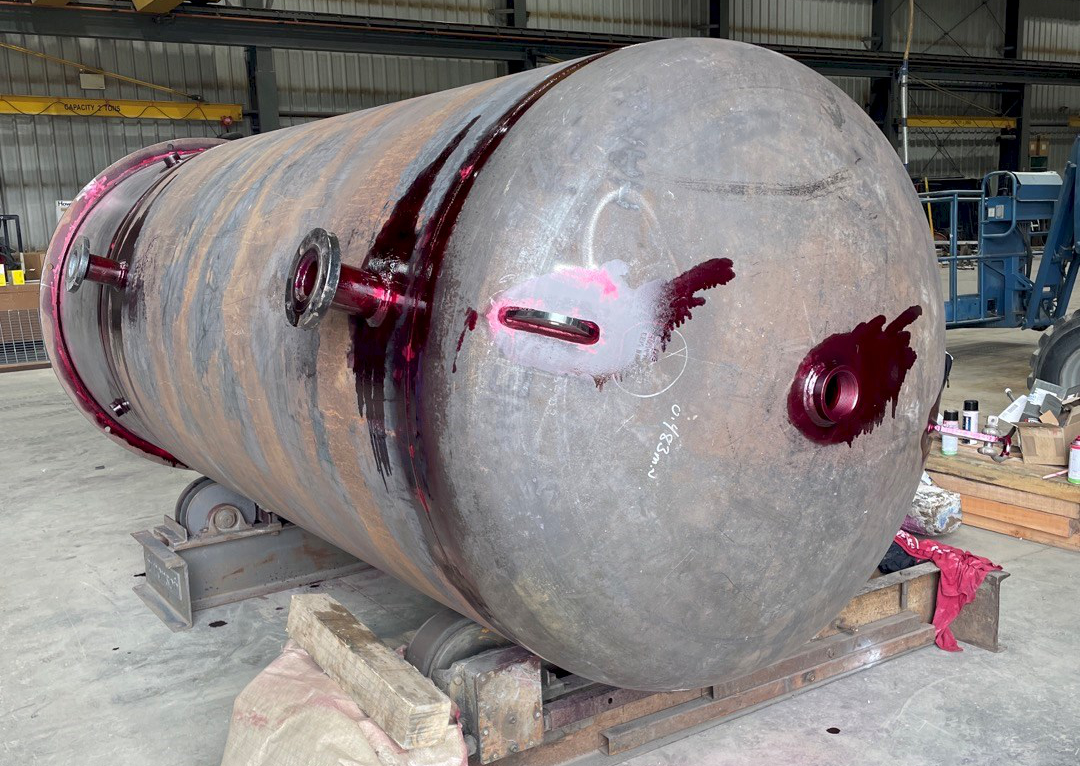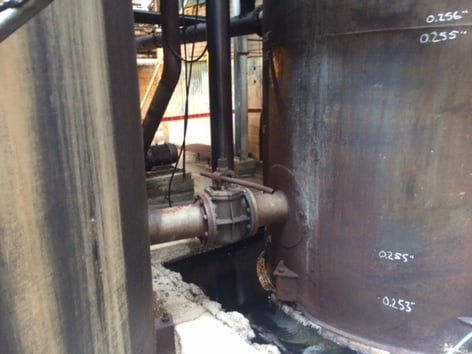Exactly How to Guarantee Conformity with Tank Welding Inspection Specifications
Exactly How to Guarantee Conformity with Tank Welding Inspection Specifications
Blog Article
Comprehensive Guide to Effective Tank Welding Inspection Techniques and Finest Practices for Top Quality Guarantee
In the world of container welding, strenuous evaluation methods are paramount for securing architectural stability and making sure compliance with sector guidelines. This guide provides an organized strategy to various inspection approaches, consisting of visual assessments and non-destructive testing, which play a vital duty in finding imperfections before they rise into severe issues. In addition, the importance of precise documentation and the execution of continual improvement techniques can not be overstated. As we check out these essential elements, it comes to be clear that a positive evaluation technique is not simply beneficial, yet important for functional success in atmospheres handling unsafe materials.
Relevance of Container Welding Assessment

Tank welding examination works as a preventative action, recognizing possible problems such as cracks, porosity, or improper joint penetration before they rise into major concerns. Regular examinations not only comply with industry guidelines and criteria yet also improve the longevity of the tanks, reducing the demand for pricey repair work or substitutes.

Aesthetic Assessment Techniques
Employing systematic visual examination strategies is essential for analyzing the quality and integrity of bonded joints in tanks. This method acts as the first line of defense in recognizing possible problems such as fractures, damages, and insufficient penetration. The assessor ought to approach the job with an eager eye, utilizing ideal devices like multiplying glasses, flashlights, and mirrors to improve exposure.
Throughout the evaluation process, the examiner needs to examine the weld account, ensuring it complies with defined standards and standards (Tank Welding Inspection). This consists of taking a look at the bead width, elevation, and combination with the base material. Assessors need to likewise pay very close attention to the bordering locations for indications of thermal distortion or contamination that might affect the weld's performance
Paperwork of searchings for is vital; inspectors should tape any kind of abnormalities, classifying them by extent for further analysis. This systematic strategy not just help in instant defect recognition however also contributes to long-lasting quality guarantee by ensuring compliance with sector standards. Routine training and calibration of aesthetic inspection techniques additionally boost the reliability of analyses, ultimately leading to safer and a lot more sturdy storage tank structures.
Non-Destructive Testing Methods
Non-destructive testing (NDT) methods are often utilized in container welding link inspections to analyze the integrity of welded joints without compromising their architectural integrity. These techniques are vital for recognizing issues such as splits, gaps, and incorporations that can bring about catastrophic failures if left undetected.
Common NDT techniques consist of ultrasonic screening (UT), which uses high-frequency acoustic waves to identify inner imperfections; radiographic screening (RT), utilizing X-rays or gamma rays to picture weld structures; and magnetic particle testing (MT), which discloses surface area and near-surface stoppages in ferromagnetic products (Tank Welding Inspection). Liquid penetrant testing (PT) is also extensively made use of, capable of identifying surface-breaking issues by applying a fluorescent or shade contrast dye
Each NDT technique has its particular applications and benefits, making it vital for inspectors to pick the proper strategy based upon the material and the sort of weld being evaluated. The integration of these NDT approaches into the evaluation procedure enhances the total high quality guarantee structure, guaranteeing that bonded containers fulfill safety and security and performance requirements. Ultimately, NDT plays an essential role in preserving the honesty and long life of tank structures in various industrial applications.

Paperwork and Reporting
Guaranteeing extensive documentation and reporting during container welding examinations is essential for preserving conformity with market standards official website and promoting effective communication among stakeholders. Appropriate documentation works as an extensive document of examination tasks, findings, and any type of rehabilitative actions taken throughout the welding process. This details is essential not just for quality control however additionally for audits and regulatory reviews.

A well-structured examination report must include details such as the date of evaluation, names of examiners, welding treatments used, products utilized, and any kind of variances from developed requirements. In addition, photos and representations can enhance the quality of visit here the report, offering visual context to the findings. It is likewise vital to document any kind of non-conformities together with their resolution, ensuring that all stakeholders are notified of possible risks and the steps taken to alleviate them.
Moreover, keeping a centralized data source for all inspection reports enables for simple access and review, fostering a culture of openness and liability. By prioritizing thorough documents and reporting, organizations can not only copyright quality control however additionally enhance their reputation within the market, inevitably bring about boosted security and operational efficiency.
Continuous Renovation Practices
Constant renovation methods are essential for boosting the top quality and effectiveness of storage tank welding evaluations. One reliable method includes normal training and upskilling of assessment personnel to stay abreast of the most current welding modern technologies and criteria.
Furthermore, using data-driven evaluation allows organizations to track assessment results, determine trends, and identify areas for improvement. Utilizing tools such as origin analysis can help in understanding the underlying problems leading to defects, allowing targeted treatments. Furthermore, getting feedback from assessment teams and stakeholders develops a collective environment that motivates cutting-edge services.
Integrating sophisticated modern technologies, such as computerized assessment systems and real-time surveillance, can substantially boost the accuracy and speed of evaluations. Routine audits of the evaluation processes additionally add to a society of accountability and continuous refinement. Inevitably, these continual renovation techniques not only elevate the quality of container welding inspections but also add to overall operational excellence and consumer satisfaction.
Final Thought
In verdict, effective tank welding examination is critical for guaranteeing the architectural stability and safety of storage space systems, particularly those dealing with hazardous materials. Using a combination of aesthetic examination strategies and non-destructive testing techniques facilitates the very early identification of flaws, thus keeping conformity with market criteria.
Report this page